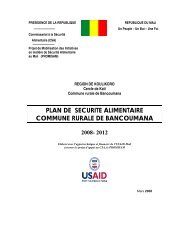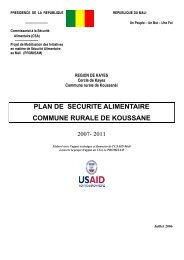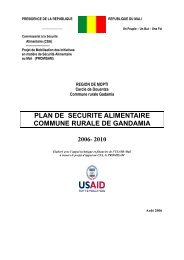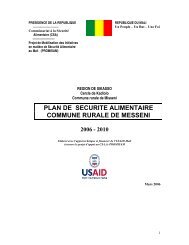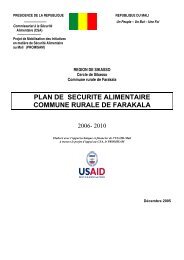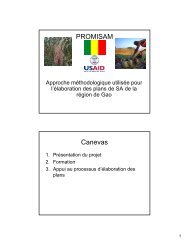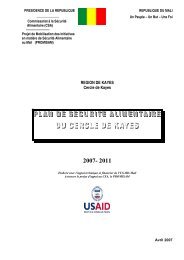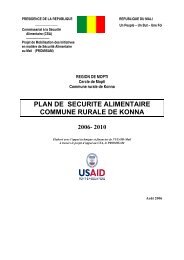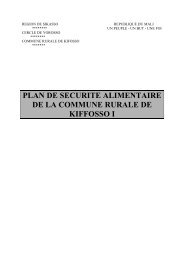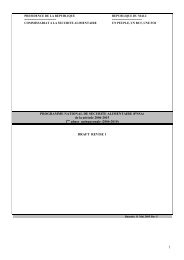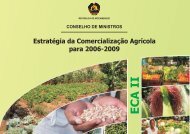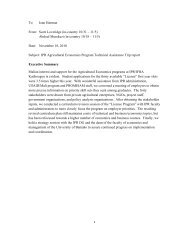STATA 11 for Windows SAMPLE SESSION - Food Security Group ...
STATA 11 for Windows SAMPLE SESSION - Food Security Group ...
STATA 11 for Windows SAMPLE SESSION - Food Security Group ...
Create successful ePaper yourself
Turn your PDF publications into a flip-book with our unique Google optimized e-Paper software.
Stata <strong>11</strong> Sample Session Section 4 – Tables and Graphs, Survey estimation<br />
Survey Estimation -<br />
Accounting <strong>for</strong> Design<br />
Effects<br />
paste the command, switch back to the dialog box and<br />
click on Submit. to view the graphic.<br />
What are these graphs telling you?<br />
6. Close the graph, Return to the dialog box, highlight<br />
Plot 2 and click on Edit .<br />
7. Change the type of plot to quadratic prediction<br />
plot w/CI. Click on the Accept button.<br />
8. Click on the Submit button to view the graphic.<br />
What are these graphs telling you?<br />
9. If we want to see the distribution by district, click on<br />
the “By” tab. In the Variables box select district<br />
10. Click on the Ok button to view the graphic.<br />
What are these graphs telling you?<br />
The Stata commands are:<br />
twoway (scatter ae cprod_tt)<br />
twoway (scatter ae cprod_tt), by(district)<br />
twoway (scatter ae cprod_tt) (lfit cprod_tt)<br />
twoway (scatter ae cprod_tt) (lfit ae cprod_tt),<br />
by(district)<br />
twoway (scatter ae cprod_tt) (qfitci ae cprod_tt)<br />
twoway (scatter ae cprod_tt) (qfitci ae cprod_tt),<br />
by(district)<br />
Stata provides statistical commands that have been developed<br />
specifically <strong>for</strong> survey analyses. The Stata User’s Guide<br />
discusses these commands as well as the manual called Survey<br />
Data. Most of these commands begin with the letters svy.<br />
There are a few of the survey commands that do not begin with<br />
these letters.<br />
Survey data generally have three importance characteristics:<br />
1. The weights applied to survey data are sampling<br />
weights - also called probability weights<br />
2. The sample is clustered<br />
3. Stratification is used in selecting the sample<br />
If data meets any one of the above characteristics, the survey<br />
commands can be used <strong>for</strong> analysis. Briefly, sampling weights<br />
are used in analysis to give estimators that are approximately<br />
unbiased <strong>for</strong> whatever is being estimated <strong>for</strong> the whole<br />
population, i.e. one observation represents many elements in<br />
the population from which the sample is drawn.<br />
Clustering by districts or villages is used in almost all survey<br />
sampling rather than selecting an independent sample. Further<br />
108



